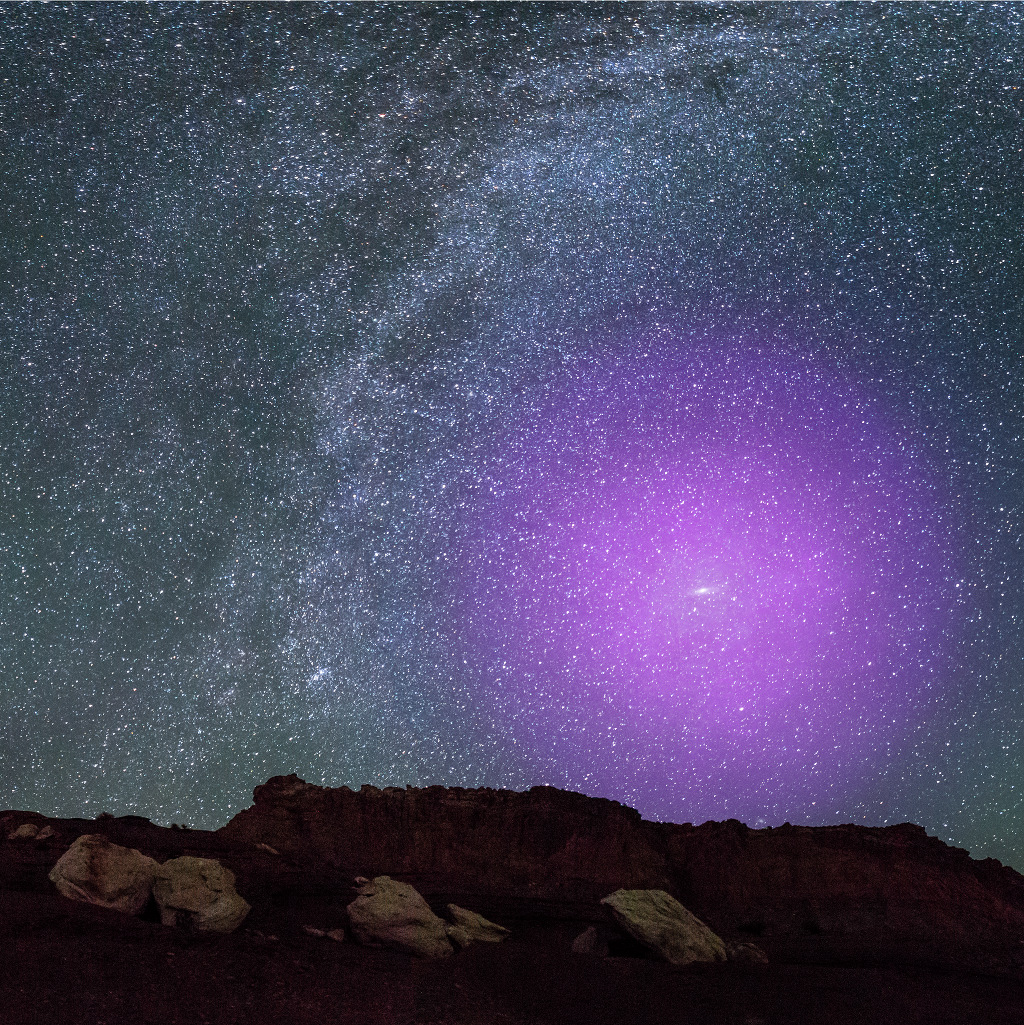2020年9月3日
A Halo for Andromeda
Digital Illustration Credit: NASA, ESA, J. DePasquale and E. Wheatley (STScI) and Z. Levay
Explanation: M31, the Andromeda Galaxy, is the closest large spiral galaxy to our Milky Way. Some 2.5 million light-years distant it shines in Earth’s night sky as a small, faint, elongated cloud just visible to the unaided eye. Invisible to the eye though, its enormous halo of hot ionized gas is represented in purplish hues for this digital illustration of our neighboring galaxy above rocky terrain. Mapped by Hubble Space Telescope observations of the absorption of ultraviolet light against distant quasars, the extent and make-up of Andromeda’s gaseous halo has been recently determined by the AMIGA project. A reservoir of material for future star formation, Andromeda’s halo of diffuse plasma was measured to extend around 1.3 million light-years or more from the galaxy. That’s about half way to the Milky Way, likely putting it in contact with the diffuse gaseous halo of our own galaxy.
Tomorrow’s picture: pixels in space
仙女座大星系的气晕
数位图示提供: NASA, ESA, J. DePasquale and E. Wheatley (STScI) and Z. Levay
说明: 仙女座大星系(M31)是离我们银河系最近的大螺旋星系。约2百50万光年远的M31,在地球的夜空中,是一个肉眼勉强可见的暗淡条形云状天体。不过,悬在这道嵯峨岩脉上方的这个邻近星系,还有个肉眼不得见,在这幅数位图示中以粉红色泽标示,由炽热电离气体构成的庞大气晕。以前,哈伯太空望远镜经由观测背景类星体发出的紫外光受到的吸收,从而绘测出这个气晕。不过,这个弥漫电浆晕的范围和组成最近才刚由AMIGA计画测定,并发现它是未来可形成恒星的物质库,而且从仙女座大星系向外绵延超过1百30万光年。这个距离约是银河系与仙女座星系间距之半,因此,这个气晕可能和我们银河系的弥漫气晕相接。
明日的图片: pixels in space


